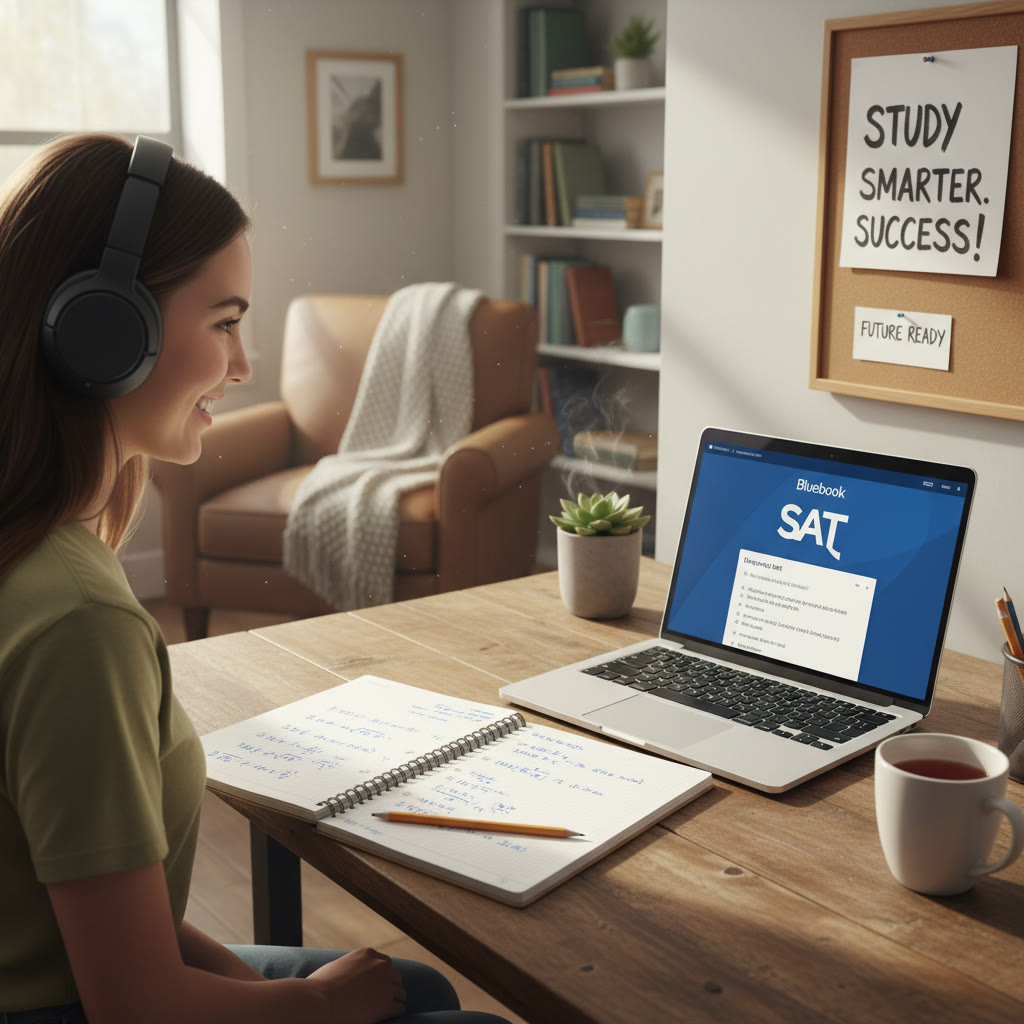Understanding UPenn and the Role of the SAT in 2025–2026 Admissions
When you hear “University of Pennsylvania,” many images flash through a student’s mind—historic red-brick quads, intense research, and a highly competitive admissions process. In that mix, the SAT still plays a role for many applicants, though how schools treat test scores has evolved. For families navigating the Digital SAT era, the key is to understand how UPenn currently uses test information, where scores can strengthen your application, and what alternatives exist if testing isn’t the right choice.

Is the SAT required for UPenn?
UPenn’s testing policy has changed over recent years, and that shift continues to matter. Some applicants submit SAT or ACT scores; others apply without them. Whether you choose to submit scores should be strategic: a strong Digital SAT result can bolster an application, especially if your GPA or course rigor leaves questions. Conversely, applying without scores can be reasonable if your academic record, recommendations, essays, and extracurricular profile are outstanding.
Why a score still matters
For students who do submit, the SAT can:
- Provide a standardized point of comparison across different high schools and course contexts.
- Inform scholarship and honors program eligibility in some cases.
- Demonstrate readiness for specific academic tracks (STEM-focused applicants often benefit from strong Math scores).
What a Strong UPenn SAT Profile Looks Like
There’s no single magic number that guarantees admission to UPenn, but patterns among admitted students point to high-performance ranges. Think of the SAT as one piece in a multi-dimensional application puzzle: grades and course rigor are central, but the SAT is the standardized brushstroke admissions officers can use to compare applicants from different backgrounds.
Score targets by college and major
UPenn is a multi-school university (Penn Arts & Sciences, Wharton, Engineering, Nursing, etc.), and expectations vary slightly by program. For example, applicants to Wharton and School of Engineering often present higher quantitative scores than applicants to some arts and humanities tracks. If you’re aiming for one of Penn’s highly selective programs, target scores in the top percentiles for best-fit confidence.
| Applicant Goal | Recommended Composite Digital SAT Target | Focus Area |
|---|---|---|
| Competitive (most applicants to UPenn) | 1450–1550 | Balanced Reading/Writing + Math |
| Highly Competitive (Wharton, Engineering) | 1500–1600 | Strong Math; excellent evidence-based reading/writing |
| Good-fit with exceptional other strengths | 1350–1490 | Use other application strengths to compensate |
These ranges are pragmatic targets: scoring near or above them improves confidence, but admissions decisions are holistic. A lower SAT can be offset by exceptional leadership, unique research, creative portfolios, or compelling life experience.
Digital SAT: What’s Different and What That Means for UPenn Applicants
The SAT moved to a digital format, and that has important implications for preparation, timing, and how you demonstrate strengths. The structure is shorter, question types are adapted for on-screen delivery, and official practice resources are available online. Familiarity with the digital interface reduces test-day stress—something many parents and students underestimate.
Practical digital test tips
- Take official practice tests on the same device type you’ll use on test day (laptop, tablet). The digital test environment changes pacing and reading behavior.
- Work on screen-reading stamina: practice 45–75 minute focus blocks to mimic test sections.
- Install and practice with the Bluebook app if required; know how the on-screen tools (flagging, review, calculators) work.
How the digital SAT helps different learners
Some students find digital testing faster and more comfortable (zooming into passages, quicker navigation). Others need time to adapt. If your student benefits from 1-on-1 coaching or device-specific strategies, a tailored plan—like the personalized tutoring Sparkl offers—can accelerate adaptation and reduce test anxiety.

Timing Your Tests: When to Take the Digital SAT for UPenn
Timing matters. You want scores to be ready for UPenn’s application deadlines (Early Decision deadline typically in early November; Regular Decision in early January). That means planning backward from deadlines to pick test dates, allow for retakes, and leave time for targeted improvement.
Suggested timeline
- Junior year spring/summer: take an initial diagnostic Digital SAT to identify strengths and weaknesses.
- Senior year fall (Sept–Oct): sit the SAT if applying Early Decision; aim to have score report submitted by application deadline.
- If retaking, leave at least one administration between attempts to allow focused study and measurable progress.
Application Strategy: Submit, Test-Optional, or Test-Blind?
UPenn’s approach toward test submissions can evolve, and some applicants opt to submit scores while others do not. The decision should be strategic and individualized.
When to submit scores
- Submit if your scores are strongly competitive for your intended school or program.
- Submit if your other academic indicators (GPA, course rigor) are from a non-traditional or international system where comparability is harder to assess—strong SAT scores add clarity.
- Consider submitting even if just one section is strong (for example, a very high Math score for Engineering applicants), accompanied by an explanation or relevant coursework and activities.
When to skip submitting
If your SAT score falls well below the recommended ranges and you cannot meaningfully improve it before deadlines—focus on maximizing the other application elements. Remember: UPenn reads applications holistically; a missing score does not automatically eliminate you.
Beyond the Numbers: Essays, Recommendations, and Demonstrated Interest
UPenn looks for academic excellence, intellectual curiosity, and the potential to contribute meaningfully to the campus community. Test scores help, but they do not capture creative talent, leadership, or context.
How to complement your SAT score in your application
- Essays: Use them to reveal character, motivation, and specific fit with UPenn’s schools and programs.
- Recommendations: Ask teachers who can speak to your academic growth and intellectual promise—concrete examples beat general praise.
- Extracurricular impact: Depth beats breadth. Show sustained contribution and measurable outcomes when possible.
Study Strategies That Work for the Digital SAT
Preparation is both practical and psychological. Effective study blends disciplined practice, targeted review, and confidence-building. Here are study strategies that translate into meaningful score gains, backed by a realistic practice schedule.
Core elements of a successful prep plan
- Diagnostic test to set a baseline and identify the highest-leverage weaknesses.
- Focused skill work: targeted practice for weaker areas rather than redoing what you already know well.
- Regular timed practice: simulate test conditions at least every 1–2 weeks as you get closer to test day.
- Review and error log: track each mistake and the underlying reason (concept gap, careless error, timing, misunderstanding).
Example 12-week study plan (for students with busy schedules)
| Weeks | Primary Focus | Weekly Time | Milestone |
|---|---|---|---|
| 1–2 | Diagnostic & foundational review (algebra, grammar rules) | 4–6 hours | Baseline test taken; error log started |
| 3–6 | Targeted practice on weakest areas; strategy drills | 6–8 hours | Noticeable improvement on practice section scores |
| 7–9 | Full digital practice tests + pacing strategies | 8–10 hours | Comfortable with timing and navigation tools |
| 10–12 | Final polishing, targeted drills, mental preparation | 4–6 hours | Highest-probability test date scheduled; confidence routine established |
How Parents Can Support Without Taking Over
Parents want to help, and the best support is steady, practical, and emotionally aware. Let your student own the process while you create the conditions for success.
Helpful ways to pitch in
- Provide structure: a quiet study space, consistent schedule, and healthy sleep patterns.
- Be a test-day logistic manager: confirm registration, device readiness, and a calm morning routine.
- Encourage practice, not perfection: celebrate progress and learning from mistakes instead of only scores.
When Personalized Help Makes the Biggest Difference
Many students benefit from focused, individualized support. Personalized tutoring can accelerate progress by delivering a tailored study plan, targeted practice, and motivational accountability. For families considering coaching, look for tutors who diagnose the student’s unique patterns and build a plan that matches their timeline and learning style.
What to expect from quality personalized tutoring
- 1-on-1 guidance that targets exactly where the student loses points (content gaps, pacing, or test strategy).
- Tailored study plans that fit a student’s schedule and focus on the highest-impact work.
- Expert tutors who can model problem-solving and help translate score goals into weekly tasks.
- Data-informed feedback—tracking progress, adjusting practice, and building confidence.
For example, Sparkl’s personalized tutoring blends these elements: one-on-one instruction, tailored study plans, expert tutors, and AI-driven insights to track where practice produces real score improvements. Families often choose this mix when they want efficient, measurable progress.
Putting It All Together: A Practical Application Checklist for UPenn Applicants
Here’s a compact checklist you can follow through the application cycle. Keep it visible, review milestones weekly, and adjust as you learn more about your strengths and timeline.
- Decide whether to take or submit SAT scores based on initial diagnostic and realistic improvement timeline.
- If testing: schedule diagnostic, plan 8–12 weeks of focused prep, and simulate digital test conditions multiple times.
- Gather strong recommendations from teachers who know your best academic work.
- Draft and refine personal essays early—use them to show your voice, intellectual curiosity, and fit for UPenn.
- Secure any supplemental materials required by specific Penn schools (studio work, portfolios, etc.).
- Keep a calm test-day routine: device check, good sleep, and a light, familiar breakfast.
Realistic Expectations and Emotional Resilience
Applying to UPenn can be stressful. The most successful applicants are those who balance ambition with perspective: they aim high but know a single score or outcome doesn’t define them. Build resilience by focusing on controllables—study habits, submission quality, and authentic storytelling in your application.
When things don’t go as planned
- Don’t let a lower than hoped-for score stop you from applying if the rest of your profile is strong.
- Consider retakes only when a realistic study plan exists that yields measurable improvement.
- Remember: transfer pathways, gap years, and other admissions routes can still lead to Penn or similar institutions—admissions isn’t a single gate.
Final Thoughts: Be Strategic, Be Authentic, and Use Resources Wisely
UPenn’s admissions are intentionally holistic, and your path there can be many things: rigorous, iterative, and deeply personal. Use the SAT as a tool—not a verdict. If you choose to submit scores, prepare smartly for the Digital SAT with authentic practice, timing strategies, and support that fits your learning style. Personalized tutoring—whether to shore up math fundamentals, build reading-comprehension stamina, or refine test strategy—can be a game-changer when it is tailored to you. Sparkl’s 1-on-1 guidance, tailored study plans, and data-driven tutor feedback are the sort of targeted support that helps many students convert effort into measurable improvement.
Above all, keep the big picture in view. UPenn wants students who will thrive in their classrooms and communities. Test scores help tell that story—so prepare well, present honestly, and let your full application do the talking.
Quick resources checklist (for your next steps)
- Take a diagnostic Digital SAT to know where you stand.
- Decide whether you’ll submit scores and set target dates for testing.
- Build a study plan with measurable milestones (or ask a tutor to build one with you).
- Draft essays early and ask for feedback from teachers or mentors.
- Manage logistics: application deadlines, recommendation requests, and test-day device readiness.
Good luck—this is an exciting, challenging time. With a clear plan, steady practice, and the right support, the path to UPenn becomes much less mysterious and a lot more achievable.















No Comments
Leave a comment Cancel